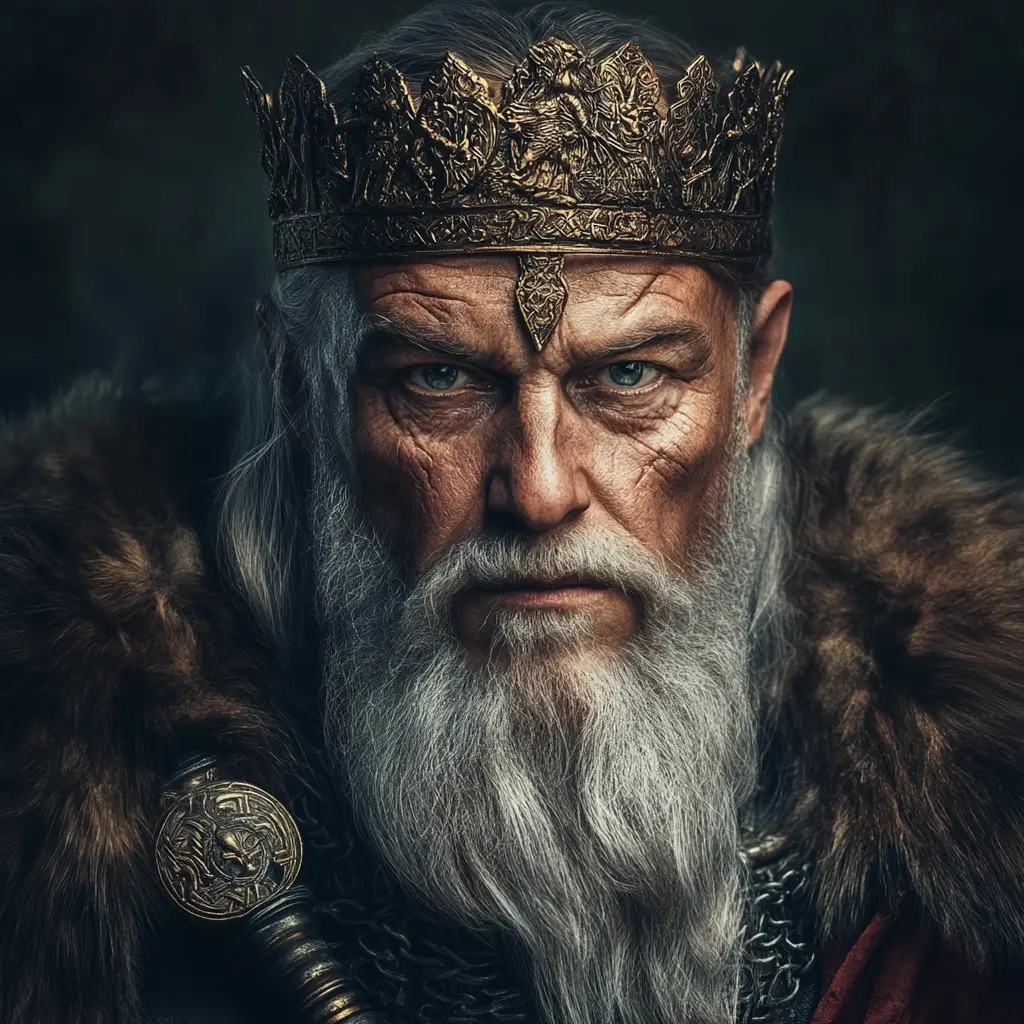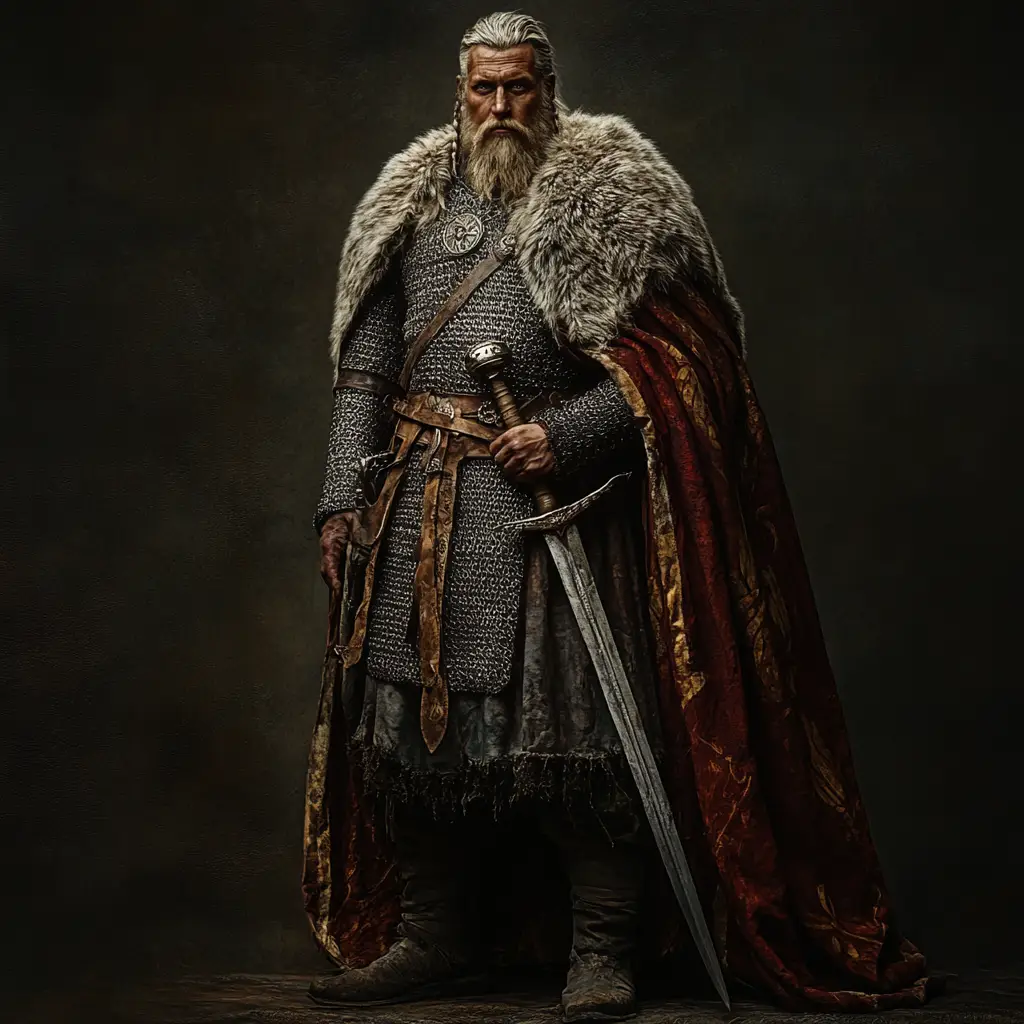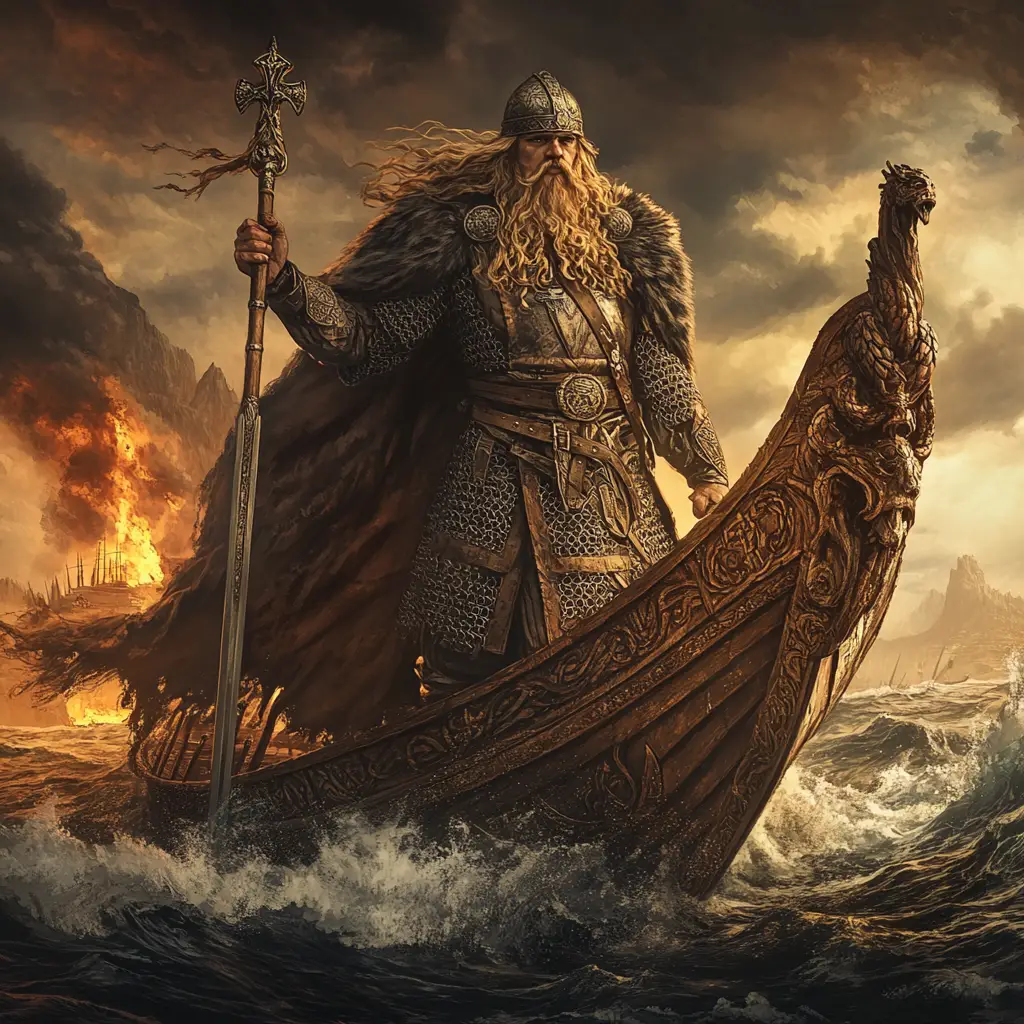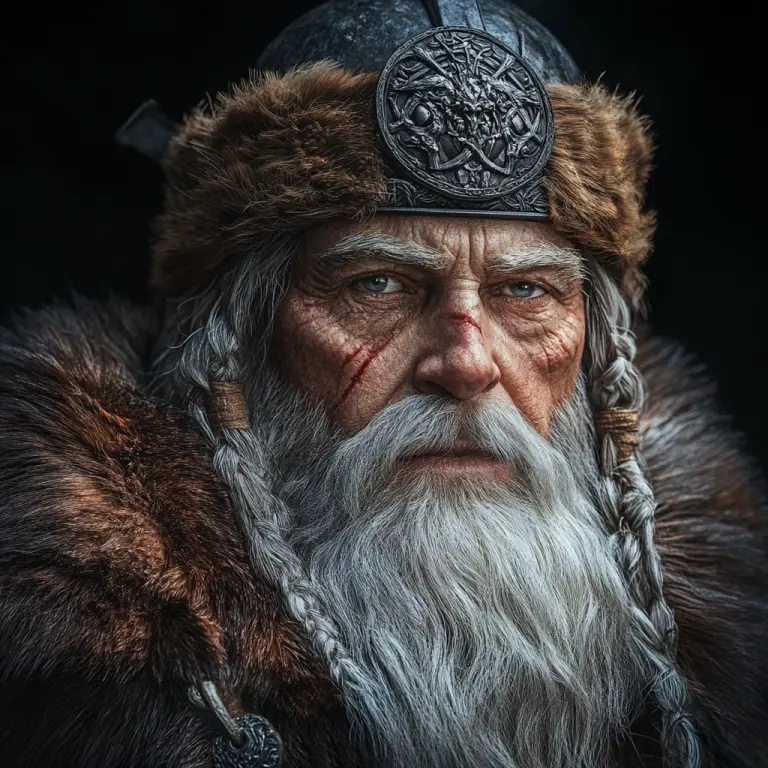A Viking King and Christian Converter
Olaf Tryggvason (c. 963–1000 AD) was a legendary Viking king of Norway who played a pivotal role in the country’s history. Known for his adventurous exploits, warrior prowess, and dedication to spreading Christianity, Olaf’s life is filled with tales of conquest, drama, and religious transformation.
Early Life
Birth and Family
Olaf was born into Norwegian royalty, the great-grandson of Harald Fairhair, Norway’s first king.
His father, Tryggve Olafsson, was a petty king who was killed in a political feud, forcing Olaf and his mother, Astrid, into exile.
Slave to Viking Warrior
As a child, Olaf was kidnapped and sold into slavery.
He later escaped and rose to prominence as a Viking warrior, participating in raids across Europe, including England and Ireland.
Rise to Power
Return to Norway
Around 995 AD, Olaf returned to Norway and claimed the throne after the death of King Haakon Sigurdsson.
He was supported by a coalition of Norwegian chieftains and backed by his strong reputation as a warrior.
King of Norway
Olaf’s reign marked a turning point for Norway as he sought to consolidate power and unite the country under a centralized monarchy.
Christianization of Norway
Missionary King
Olaf was a devout Christian and aimed to convert Norway to Christianity.
He used both persuasion and force to spread the new religion, destroying pagan temples and outlawing old Norse religious practices.
Impact
While controversial, Olaf’s efforts laid the foundation for the Christianization of Norway.
He also influenced the Christianization of surrounding regions, including Iceland and the Faroe Islands.
Adventurer and Warrior
Sea-Faring Exploits
Olaf was an exceptional seafarer, leading raids and commanding fleets with unparalleled skill.
His flagship, Ormen Lange (The Long Serpent), was one of the largest and most formidable Viking ships of the time.
Battle of Svolder (1000 AD)
Olaf’s life came to a dramatic end at the Battle of Svolder, a naval conflict against a coalition of enemies, including Denmark and Sweden.
He was defeated, and his fate remains uncertain—some accounts claim he jumped into the sea, while others suggest he fled.
A Controversial Figure
Olaf is remembered as both a hero and a tyrant.
To Christians, he was a saint-like figure who brought light to a pagan land. To others, he was a destroyer of Norse tradition.
Cultural Impact
Tales of Olaf’s life are preserved in Norse sagas, including Heimskringla and Saga of Olaf Tryggvason.
He is celebrated in Norwegian folklore and history as a symbol of Norway’s transition from paganism to Christianity.



